Originally published in the Miniature Gazette, September/October 2024, pages 8–10. The version below contains live links for your convenience.
ENJOY THE HEART OF CINCINNATI AT FOUNTAIN SQUARE
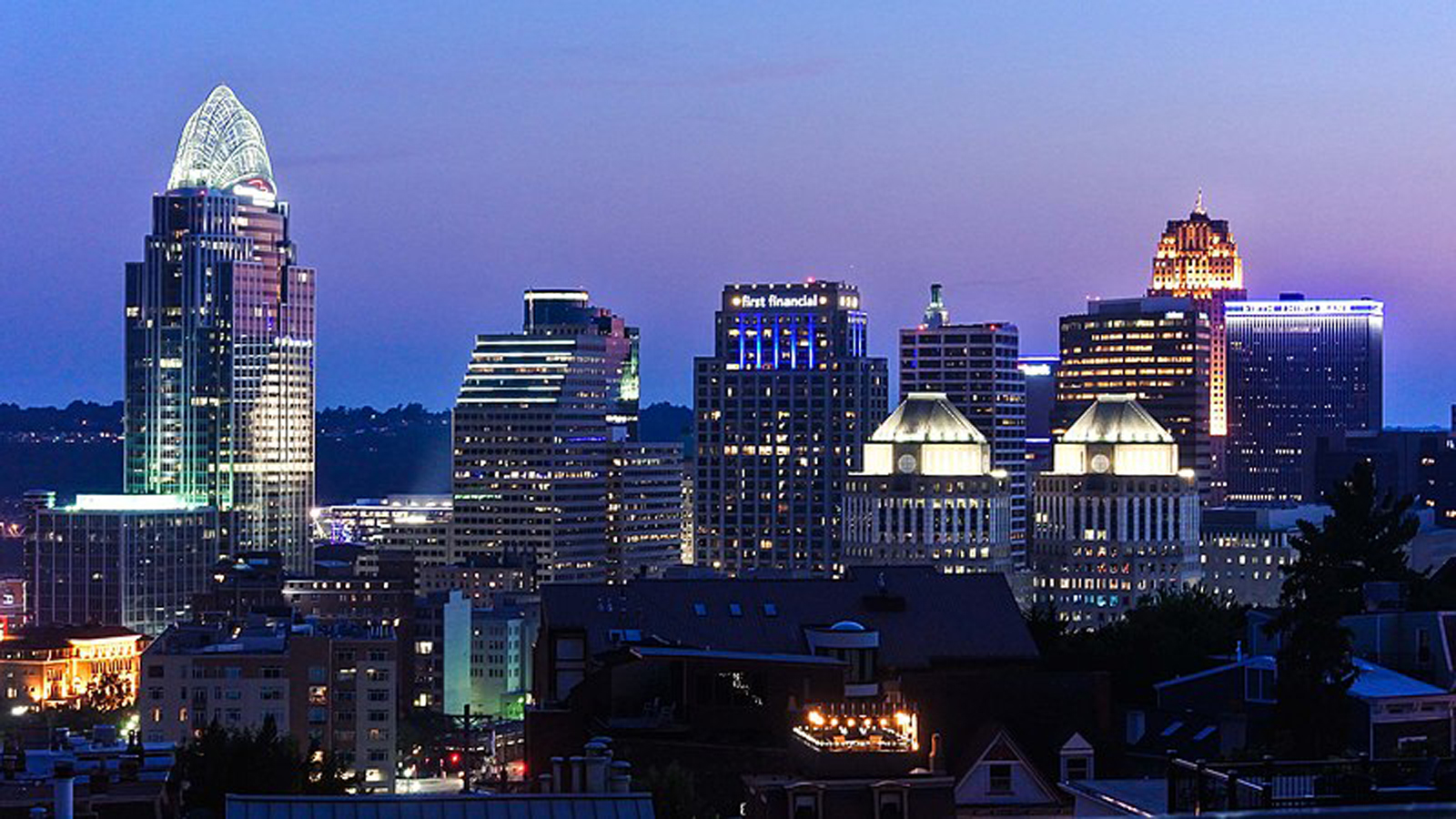
We miniaturists in Cincinnati, Ohio, are super excited
that the NAME National Convention will be heading our way August 14–17, 2025. Having hosted the annual convention
here twice before—in 1984 and 1990—one might say that it’s long overdue! Our 2025 Convention will be held at the Westin Hotel Cincinnati, located in the heart of downtown across from Fountain Square. The 17-story, 456-room hotel was built in 1981 on the site of the historic Gibson Hotel and acquired by Marriott International Inc. in 2016. Its amenities are top notch, with easy access to all facilities for our convention. And, for those of you who travel a lot, know that the Westin participates in Marriott’s Bonvoy rewards program. An informative article about that program can be found at CNN underscored: <cnn.com/cnn-underscored/travel/marriott-bonvoy-guide>.
One banquet room in particular will surely become your favorite—it’s already mine! That’s the Fountain Room, aptly named for its panoramic view of Cincinnati’s famous Tyler Davidson Fountain. The impressive 43-foot tall fountain, icon of our city, is truly breathtaking to behold, especially when lit at night! Be sure to walk across the Square to take it all in when you’re here. Fountain Square and nearby environs are convenient to shopping and restaurants, all within walking distance of the hotel. Visit <myfountainsquare.com/nearby> and <visitcincy.com/listing/fountain-square/5506> to plan ahead. We’ll highlight some of those in future articles.
Focusing on the Fountain
Even though my family’s roots are here, and I even cooled my heels in the fountain as a teenager (you’re not supposed to do that!), I never knew the story behind it. So I was fascinated to learn its history and hope you will be, too… In 1866, Cincinnati hardware magnate Henry Probasco sold his business and traveled to Munich, Germany, in search of a suitable memorial to honor his deceased business partner and brother-in-law, Tyler Davidson. Approaching the Royal Bronze Foundry of Bavaria, Probasco learned of a fountain design that had been conceived 25 years earlier, but was never cast. Artist August von Kreling and Ferdinand von Miller (the elder, Director of the Foundry) had collaborated on a unique concept that would celebrate mankind rather than one populated with mythical deities. Probasco commissioned the fountain and requested four additional figures with animals that would be drinking fountains, which Miller’s sons Ferdinand and Fritz designed. The fountain was constructed of approximately 24 short tons of cannon bronze purchased from the Danish government and 85 short tons of green granite. Cast in separate sections at the foundry, it was shipped to Cincinnati for assembly. Its dedication ceremony took place on October 6, 1871.
One hundred years later, renovations starting in 1969 prepared the fountain for its centennial. Another renovation took place in 1999, and the most recent, in 2005, moved the entire fountain to the middle of Fountain Square. It flowed once again on October 14, 2006.
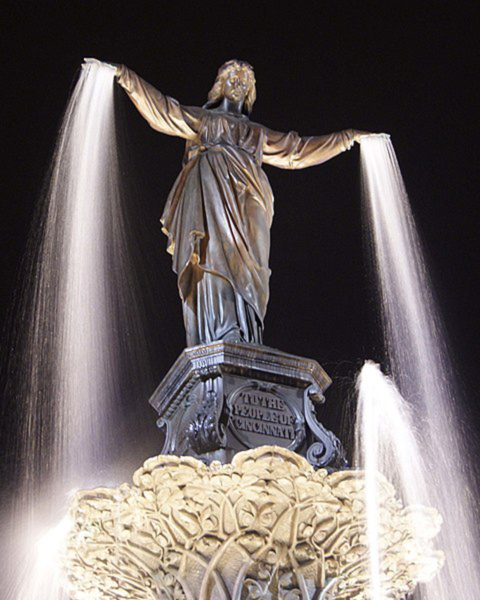
Titled “The Genius of Water,” the fountain’s motif pays homage to the city’s symbiotic relationship with the Ohio River. The square pedestal has four basso-relievo representations of principle uses of water: steam, water power, navigation and fisheries. Around the pedestal are four groups of figures topped by a 9-ft tall central female figure (I take it that she’s the “Genius”) that sprays longed-for “rain” from her outstretched fingers. The four outer drinking fountain figures represent the pleasures of water, while the basins under them were intended to provide refreshment for horses and dogs. For more interesting reading about the fountain’s design and symbolism, please refer to <en.wikipedia.org/wiki/Tyler_Davidson_Fountain>. And for some curiously fun facts about it, be sure to look up <cincinnatimagazine.com/columns/17-facts-tyler-davidson-fountain>.
Perusing the Past
Going back a little further into our local history… Founded in 1788, Cincinnati is considered by many historians to be the first American city, as it was the first major city to develop after America secured its independence. Located in the southwest corner of Ohio, north of the confluence of the Licking and Ohio Rivers and between the Great and Little Miami Rivers, three settlements comprised what would become the city: Columbia, Losantiville, and North Bend, joined by Fort Washington in 1789, which was built to defend settlers from Native attacks. Early settlers were mostly former Revolutionary War officers who were granted lands, soldiers and their families, and pioneers from New Jersey, Pennsylvania and Kentucky who came to purchase affordable land.
In 1790, Arthur St. Clair, governor of the Northwest Territory*, established Hamilton County and named the combined settlements “Cincinnati”; at that time about 700 people lived here. St. Clair was president of The Society of the Cincinnati. He named the city the same, in honor of a Fifth Century BC Roman citizen soldier, Lucius Quinctius Cincinnatus, who was commended for his loyalty and brave service in saving Rome from a crisis.
*At the time, the Northwest Territory was huge! It encompassed over 260,000 square miles, including present-day states of Illinois, Indiana, Ohio, Michigan, Minnesota and Wisconsin.
Of course, Native Americans were already here, including the Ojibwa, Lenape, Ottawa, Wyandotte, Shawnee and Miami tribes. After many skirmishes and two major battles (Wabash in 1792 and Fallen Timbers in 1794), eleven tribes signed the Treaty of Greenville in 1794, which forced them to relinquish most of their land.
Cincinnati gained its charter as a town in 1802. By 1803, there were about 1,000 civilian residents. The introduction of steamboats on the Ohio River in 1811 spurred trade and growth, and jobs were plentiful. A significant number of German-speaking immigrants came, who later founded many of the city’s cultural institutions. Incorporated as a city in 1819, Cincinnati was nicknamed “Queen of the West,” and by the next year there were nearly 10,000 residents. By 1850 the city had grown to 115,435 and was ranked sixth largest in the U.S.
Other nicknames for Cincinnati include The Queen City, The City of Seven Hills, Cincy, The ‘Nati, The Pig City, and Porkopolis—so called because Cincinnati was once the pork-processing capital of the country (prior to Chicago taking over that moniker by 1875). During the 1840s to 1860s, hogs overran downtown streets as they were herded into one of 48 pork-packing warehouses that existed then. With the Ohio River as its lifeline, steamboats transported pork and hay, as well as many other products.
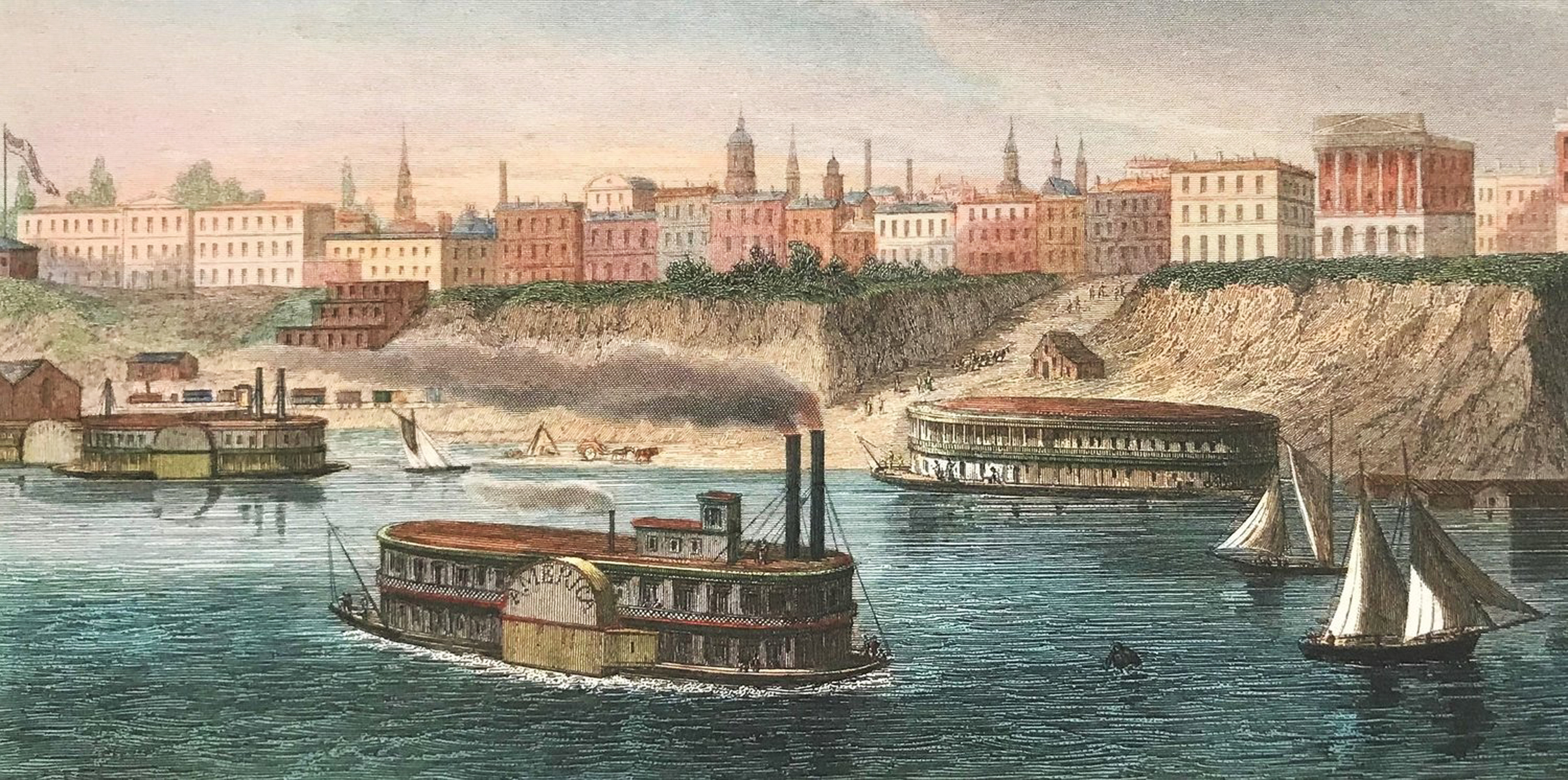
Prior to the Civil War, with Kentucky being a slave state just across the river, Cincinnati became an important stop on the Underground Railroad. Abolitionist author Harriet Beecher Stowe lived here as a young adult. No doubt influenced by her deeply religious family and controversial issues surrounding slavery, her book, “Uncle Tom’s Cabin; or, Life Among the Lowly,” published in 1852, became the best-selling novel of the 19th century and is said to have helped fuel the abolitionist cause leading up to the Civil War. Due to our “Defense of Cincinnati,” however, no shots were ever fired in the Queen City during the Civil War (1861–1865).
By the late 1800s, Cincinnati was commonly referred to as the “Paris of America,” due mainly to ambitious architectural projects. The city had an art academy, art museum, Music Hall, opera house, Exposition Building, and a public library. About 130 magazines and newspapers were produced in the city. There were more than 200 churches, five hospitals, and a university. In 1888, the German Protestants community started a “sick house” (“Krankenhaus”) started by deaconesses, which evolved into the city’s first general hospital and included nurses’ training school. It was renamed Deaconess Hospital in 1917.
I dare say that few horses drink from the Tyler Davidson Fountain anymore, but you can cool off there when you come to Convention next August. The Convention Committee has its collective hands full. I’ve been told it takes three years to plan a NAME Convention and, at this point, we have a little over one year. Join me in applauding Chairs Nancye Claypool and Ellen Grinstead Yunker and all our volunteer committee members for taking this on with such short notice. Wish us luck and help out where you can! Next time we’ll introduce you to more of our lovely Queen City.
Follow these links to view more:
<cincinnatimagazine.com/columns/17-facts-tyler-davidson-fountain>
<wikimapia.org/935403/The-Westin-Cincinnati>
<en.wikipedia.org/wiki/History_of_Cincinnati>
<visitcincy.com/plan-your-visit/about-the-area/fun-facts>
<cincymapcollection.com/historic-maps-of-cincinnati>
<cincinnatiobservatory.org/about/our-history/our-history>
(Several photos are used directly from en.wikipedia.org/wiki/Cincinnati under the Creative Commons Attribution-Share Alike 4.0 International license.)
UNIQUE FIRSTS CLAIMED BY CINCINNATI
• 1793 first settlement in Ohio to publish a newspaper
• 1835 first bag of airmail lifted by a hot air balloon.
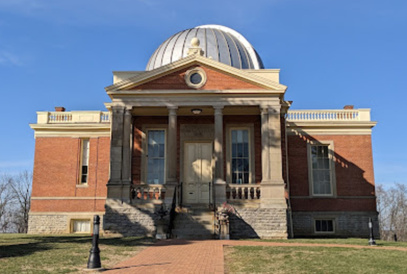
• 1845 the first public observatory in the western hemisphere, the Cincinnati Observatory became ‘The Birthplace of American Astronomy,’ housing one of the oldest working telescopes in the world.
• 1849 first city in the U.S. to hold a municipal song festival—Saengerfest.
• 1850 first city in the U.S. to establish a Jewish hospital.
• 1850 first city in the U.S. to publish greeting cards—Gibson Greeting Card Company.
• 1853 first full-time paid municipal fire department in the U.S. and first fireman’s pole. First in the world to use a practical steam fire engine.
• 1855 Findlay Market is Ohio’s oldest open-air outdoor market, was among the first markets in the U. S. to use cast and wrought iron frame construction and is one of very few that have survived.
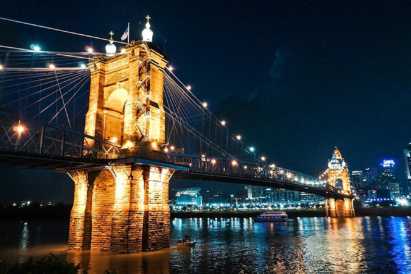
• 1866 the John A. Roebling Suspension Bridge (formerly the Cincinnati-Covington Bridge) opened, spanning the Ohio River between Cincinnati, Ohio, and Covington, Kentucky. At the time it was the longest suspension bridge in the world at 1,057 feet (later overtaken by John A. Roebling’s most famous design of the 1883 Brooklyn Bridge at 1,595.5 feet).
• 1869 first city to establish a weather bureau.
• 1869 first professional baseball team—the Cincinnati Red Stockings, now known as the Cincinnati Reds.
• 1870 first city in the U.S. to establish a municipal university—University of Cincinnati.
• 1870 first city to hold annual industrial expositions.
• 1875 The Cincinnati Zoo opened and is the second-oldest zoo in the country.
• 1875 first city to establish a Jewish theological college—Hebrew Union College.
• 1875 Reuben Springer finances the building of Music Hall for May Festival if citizens also contribute; becomes first matching fund-raiser.
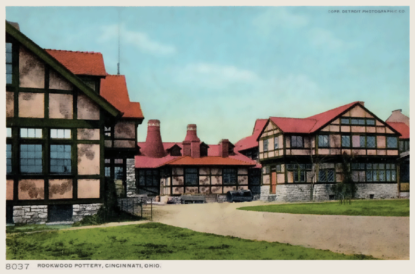
• 1880 first city in which a woman, Maria Longworth Nichols Storer, began and operated a large manufacturing operation—Rookwood Pottery.
• 1880 first and only city to build and own a major railroad—the Cincinnati Southern.
• 1902 first concrete skyscraper built in the U.S.—the Ingalls Building.
• 1905 Daniel Carter Beard founded the Sons of Daniel Boone, later known as the Boy Scouts of America.
• 1906 University of Cincinnati first to offer cooperative education.
• 1935 first night baseball game played under lights.
• 1952 first heart-lung machine, developed at Children’s Hospital Medical Center, makes open heart surgery possible.
• 1954 first city to have a licensed public television station—WCET TV.
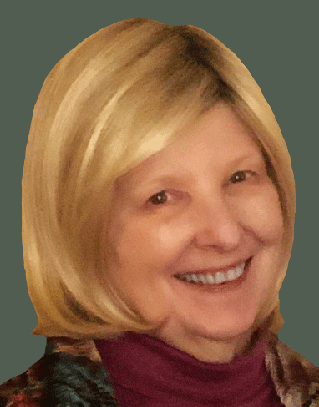
Contact: Ingrid Farnam-Koblish,
The Miniature Society of Cincinnati,
cincyminis@gmail.com. ◆